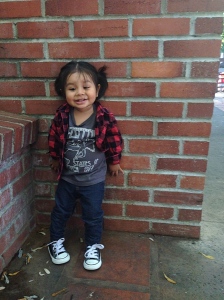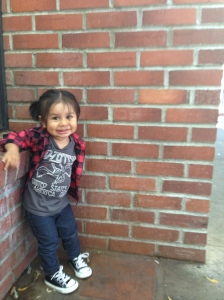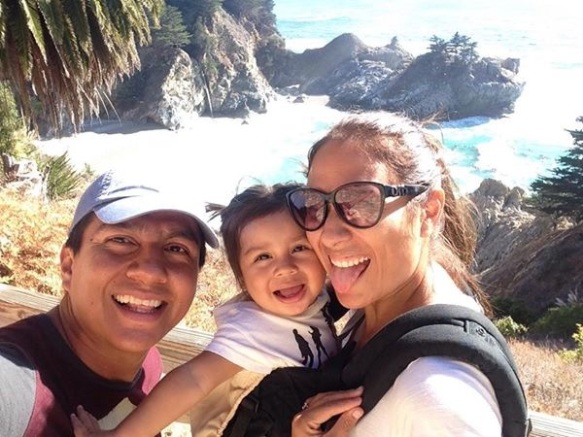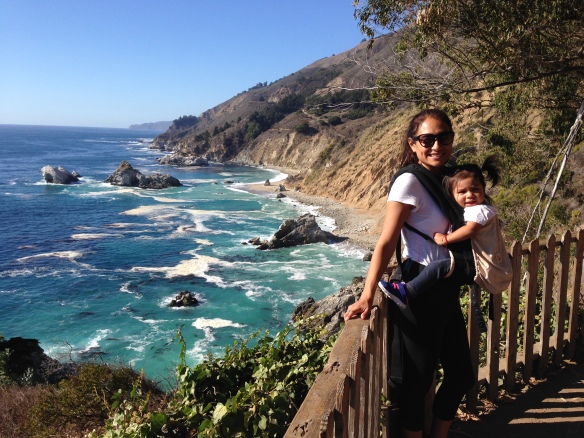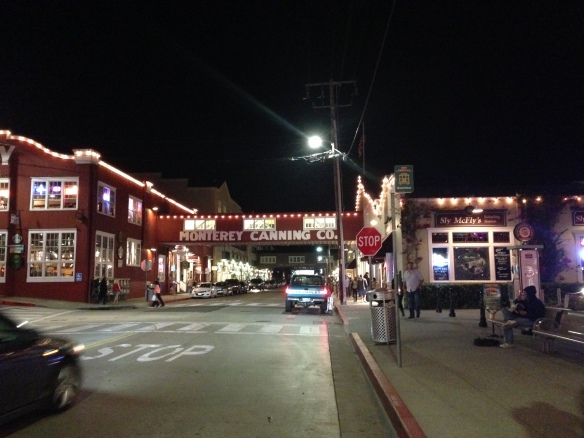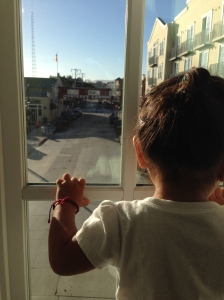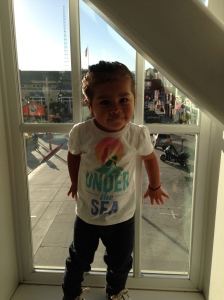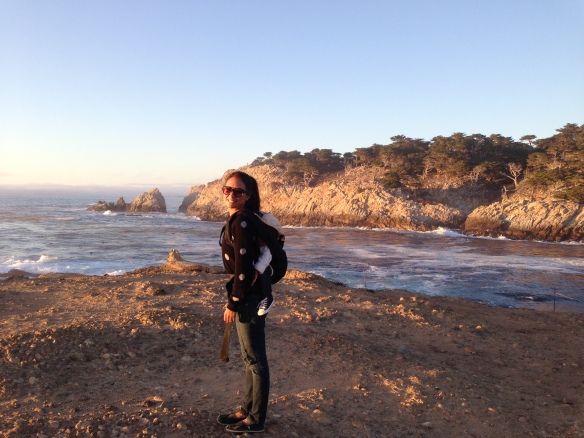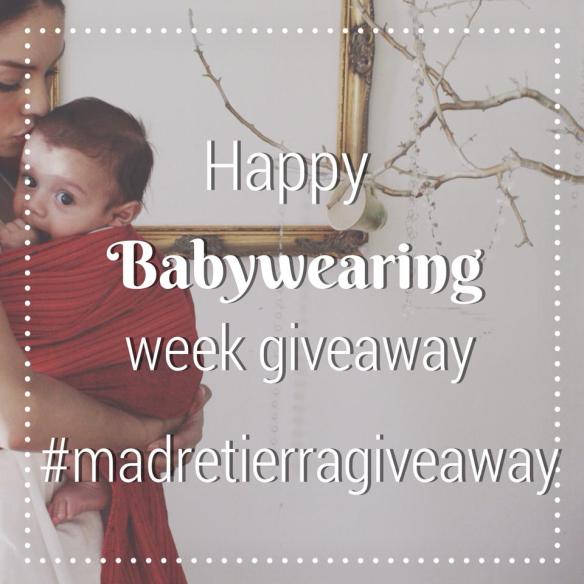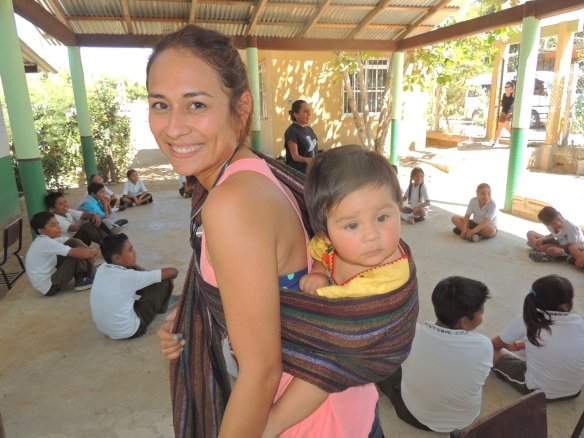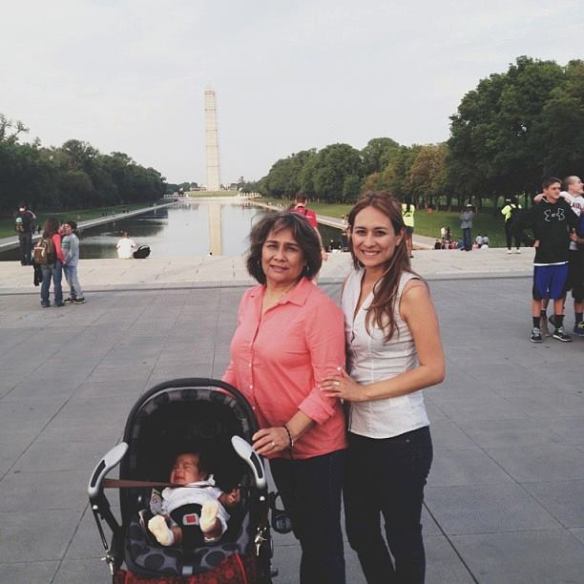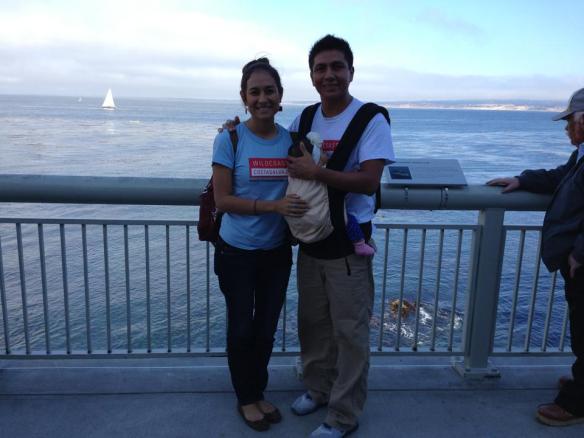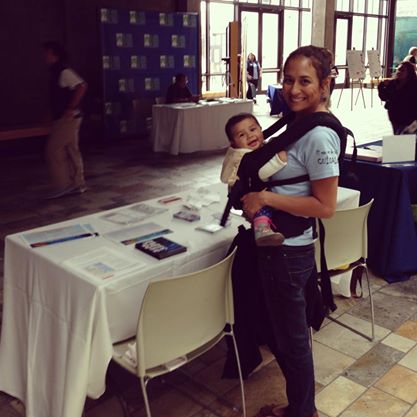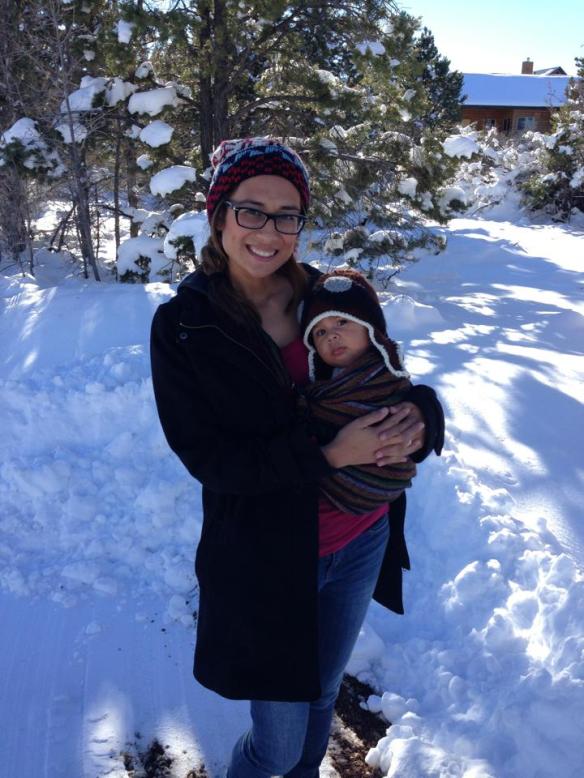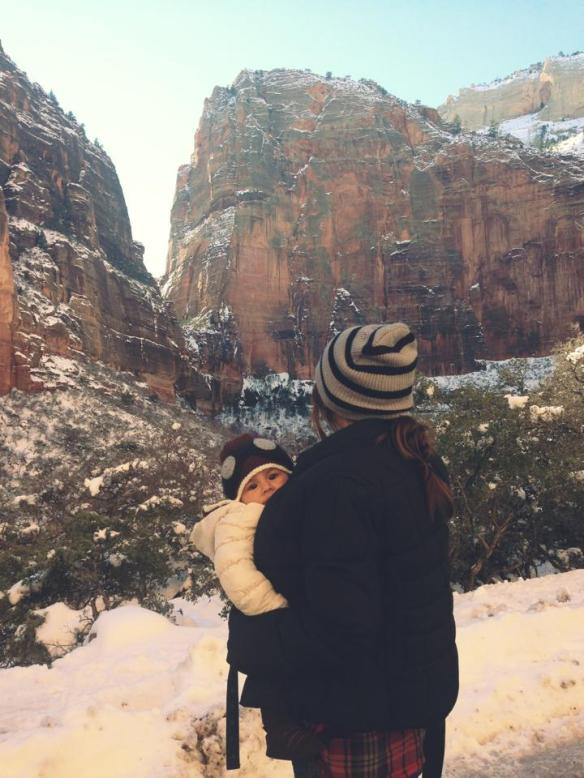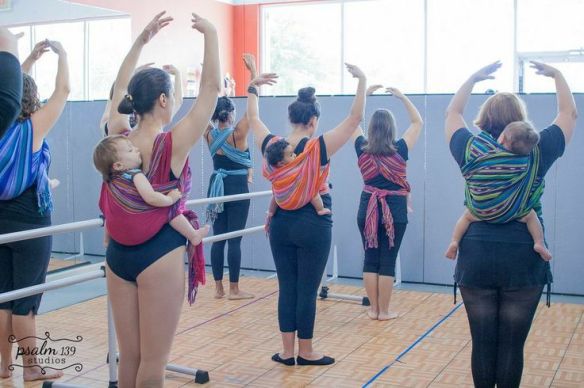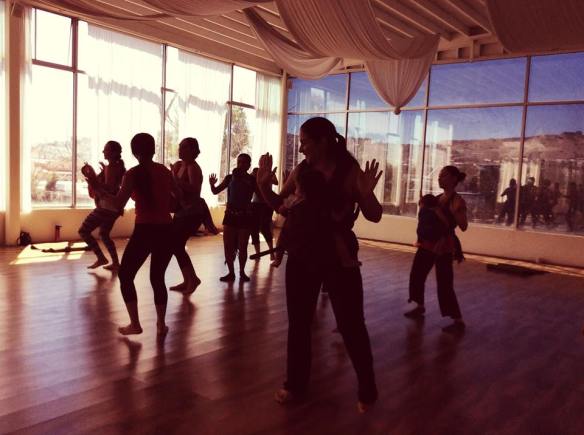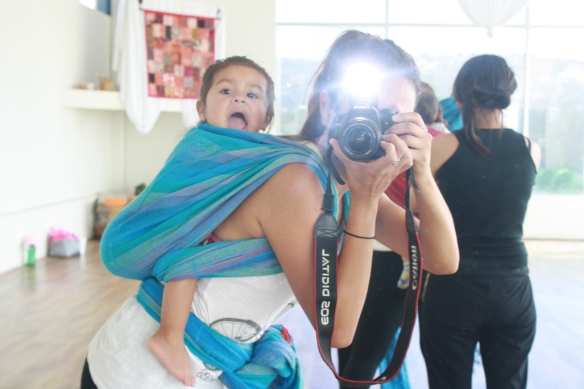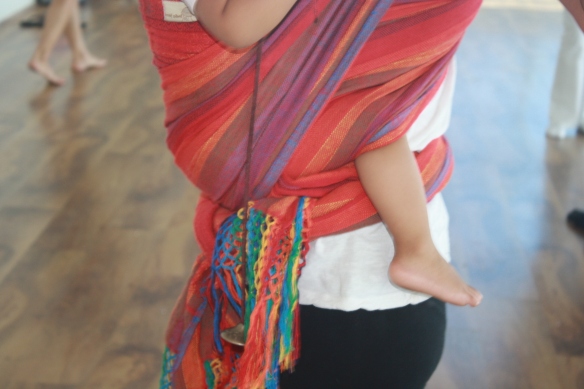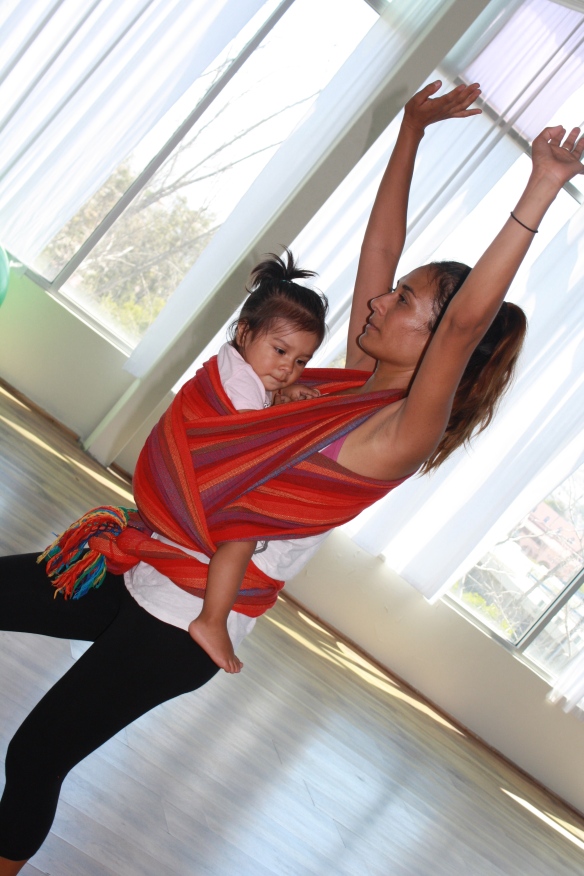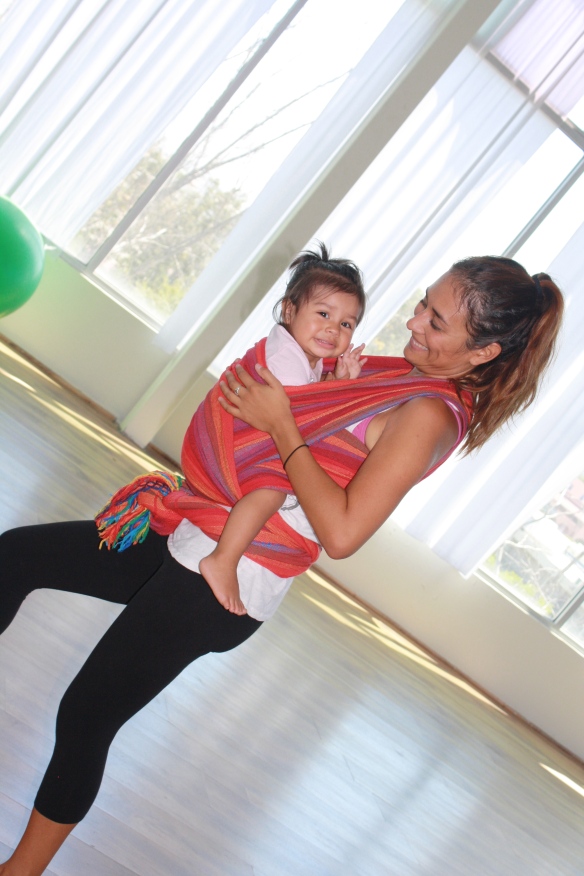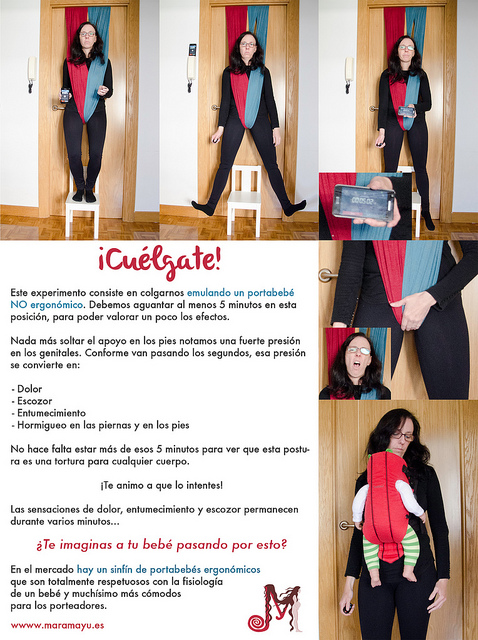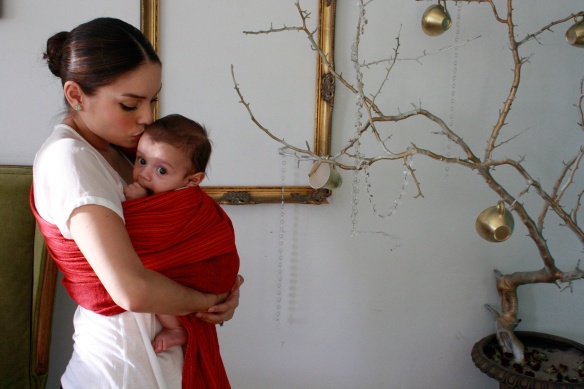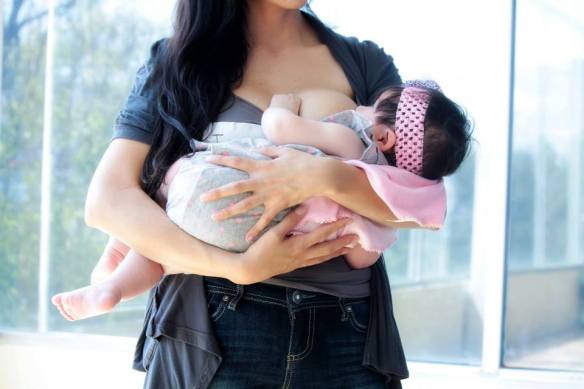
Photo by Erika Pantoja
So a good friend of mine that I met through a mamá/bebé group (and has now become a really dear friend and amazing resource) sent me the book Concept Continuum by Jean Liedloff. I started reading it yesterday and I am hooked, she just gets it. Of course I didn’t get very far into to book since my 18 month old keeps me so busy and tired I barely have time to read so this morning as I was eating breakfast (and she was still sleeping), I started doing more research on the book and stuff she has written and I came across an excerpt of the book a loved. I had read it in Spanish a few days ago and I just found it to be very interesting and made me understood why Alessandra (my girl) is just a relax (although hyper) and happy baby. Holding your baby is the key, and making your baby part of your daily busy life is very important “For one thing, it appears that the person carrying the baby… is laying the foundation for later experience. The baby passively participates in the bearers running, walking, laughing, talking, working, and playing”.
Also, how the only real experts in this whole baby/parenting thing is the baby and the parent! Just following your human/mama instincts. Why are we sometimes to incline to hear others opinions on what is right for our baby and ourselves? People telling us things like “Your baby is over a year old, you should stop breastfeeding before he gets too needy”, “Let your baby cry it out, it’s good to show you is boss”, “Don’t let your baby sleep with you, you will never get him out of the bed”, or the one I have hear since Alessandra was 1 week old “Don’t carry her all the time, she is going to manipulate you”! UGHHHH how is a one week old going to manipulate me? Good thing I didn’t listen to them and just heard the most important voice, my inner voice and the one of my baby.
I leave you here with an excerpt (for when you have that short me time) from the Concept Continuum which talks about the importance of babywearing and holding your baby all the time ♥. I promise you, you will probably read it in a few minutes it is so interesting.
The Importance of the In-Arms Phase by Jean Liedloff
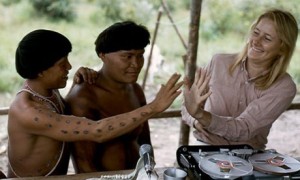
In the two and a half years during which I lived among Stone Age Indians in the South American jungle (not all at once, but on five separate expeditions with a lot of time between them for reflection), I came to see that our human nature is not what we have been brought up to believe it is. Babies of the Yequana tribe, far from needing peace and quiet to go to sleep, snoozed blissfully whenever they were tired, while the men, women, or children carrying them danced, ran, walked, shouted, or paddled canoes. Toddlers played together without fighting or arguing, and they obeyed their elders instantly and willingly.
The notion of punishing a child had apparently never occurred to these people, nor did their behavior show anything that could truly be called permissiveness. No child would have dreamed of inconveniencing, interrupting, or being waited on by an adult. And by the age of four, children were contributing more to the work force in their family than they were costing others.
Babes in arms almost never cried and, fascinatingly, did not wave their arms, kick, arch their backs, or flex their hands and feet. They sat quietly in their slings or slept on someone’s hip — exploding the myth that babies need to flex to “exercise.” They also did not throw up unless extremely ill and did not suffer from colic. When startled during the first months of crawling and walking, they did not expect anyone to go to them but rather went on their own to their mother or other caretakers for the measure of reassurance needed before resuming their explorations. Without supervision, even the smallest tots rarely hurt themselves.
Is their “human nature” different from ours? Some people actually imagine that it is, but there is, of course, only one human species. What can we learn from the Yequana tribe?
Our Innate Expectations
Primarily, we can try to grasp fully the formative power of what I call the in-arms phase. It begins at birth and ends with the commencement of creeping, when the infant can depart and return at will to the caretaker’s knee. It consists, simply, of the infant having 24-hour contact with an adult or older child.
At first, I merely observed that this in-arms experience had an impressively salutary effect on the babies and that they were no “trouble” to manage. Their bodies were soft and conformed to any position convenient to their bearers — some of whom even dangled their babies down their backs while holding them by the wrist. I do not mean to recommend this position, but the fact that it is possible demonstrates the scope of what constitutes comfort for a baby. In contrast to this is the desperate discomfort of infants laid carefully in a crib or carriage, tenderly tucked in, and left to go rigid with the desire for the living body that is by nature their rightful place — a body belonging to someone who will “believe” their cries and relieve their craving with welcoming arms.
Why the incompetence in our society? From childhood on, we are taught not to believe in our instinctive knowledge. We are told that parents and teachers know best and that when our feelings do not concur with their ideas, we must be wrong. Conditioned to mistrust or utterly disbelieve our feelings, we are easily convinced not to believe the baby whose cries say “You should hold me!” “I should be next to your body!” “Don’t leave me!” Instead, we overrule our natural response and follow the going fashion dictated by babycare “experts.” The loss of faith in our innate expertise leaves us turning from one book to another as each successive fad fails.
It is important to understand who the real experts are. The second greatest babycare expert is within us, just as surely as it resides in every surviving species that, by definition, must know how to care for its young. The greatest expert of all is, of course, the baby — programmed by millions of years of evolution to signal his or her own kind by sound and action when care is incorrect. Evolution is a refining process that has honed our innate behavior with magnificent precision. The signal from the baby, the understanding of the signal by his or her people, the impulse to obey it — all are part of our species’ character.
The presumptuous intellect has shown itself to be ill-equipped to guess at the authentic requirements of human babies. The question is often: Should I pick up the baby when he or she cries? Or should I first let the baby cry for a while? Or should I let the baby cry so that this child know who is boss and will not become a “tyrant”?
No baby would agree to any of these impositions. Unanimously, they let us know by the clearest signals that they should not be put down at all. As this option has not been widely advocated in contemporary Western civilization, the relationship between parent and child has remained steadfastly adversarial. The game has been about how to get the baby to sleep in the crib, whether or not to oppose the baby’s cries has not been considered. Although Tine Thevenin’s book, The Family Bed, and others have gone some way to open the subject up of having children sleep with parents, the important principle has not been clearly addressed: to act against our nature as a species is inevitably to lose well-being.
Once we have grasped and accepted the principle of respecting our innate expectations, we will be able to discover precisely what those expectations are — in other words, what evolution has accustomed us to experience.
The Formative Role of the In-Arms Phase
How did I come to see the in-arms phase as crucial to a person’s development? First, I saw the relaxed and happy people in the forests of South America lugging around their babies and never putting them down. Little by little, I was able to see a connection between that simple fact and the quality of their lives. Later still, I have come to certain conclusions about how and why being in constant contact with the active caretaker is essential to the initial postnatal stage of development.
For one thing, it appears that the person carrying the baby (usually the mother in the first months, then often a four- to 12-year-old child who brings the baby back to the mother for feeding) is laying the foundation for later experience. The baby passively participates in the bearers running, walking, laughing, talking, working, and playing. The particular activities, the pace, the inflections of the language, the variety of sights, night and day, the range of temperatures, wetness and dryness, and the sounds of community life form a basis for the active participation that will begin at six or eight months of age with creeping, crawling, and then walking. A baby who has spent this time lying in a quiet crib or looking at the inside of a carriage, or at the sky, will have missed most of this essential experience.
Because of the child’s need to participate, it is also important that caretakers not just sit and gaze at the baby or continually ask what the baby wants, but lead active lives themselves. Occasionally one cannot resist giving a baby a flurry of kisses; however, a baby who is programmed to watch you living your busy life is confused and frustrated when you spend your time watching him living his. A baby who is in the business of absorbing what life is like as lived by you is thrown into confusion if you ask him to direct it.
The second essential function of the in-arms experience appears to have escaped the notice of everyone (including me, until the mid-1960s). It is to provide babies with a means of discharging their excess energy until they are able to do so themselves. In the months before being able to get around under their own power, babies accumulate energy from the absorption of food and sunshine. A baby therefore needs constant contact with the energy field of an active person, who can discharge the unused excess for each of them. This explains why the Yequana babies were so strangely relaxed — why they did not stiffen, kick, arch, or flex to relieve themselves of an uncomfortable accumulation of energy.
To provide the optimum in-arms experience, we have to discharge our own energy efficiently. One can very quickly calm a fussing baby by running or jumping with the child, or by dancing or doing whatever eliminates one’s own energy excess. A mother or father who must suddenly go out to get something need not say, “Here, you hold the baby. I’m going to run down to the shop.” The one doing the running can take the baby along for the ride. The more action, the better!
Babies — and adults — experience tension when the circulation of energy in their muscles is impeded. A baby seething with undischarged energy is asking for action: a leaping gallop around the living room or a swing from the child’s hands or feet. The baby’s energy field will immediately take advantage of an adult’s discharging one. Babies are not the fragile things we have been handling with kid gloves. In fact, a baby treated as fragile at this formative stage can be persuaded that he or she is fragile.
As parents, you can readily attain the mastery that comes with comprehension of energy flow. In the process you will discover many ways to help your baby retain the soft muscle tone of ancestral well-being and give your baby some of the calm and comfort an infant needs to feel at home in the world.
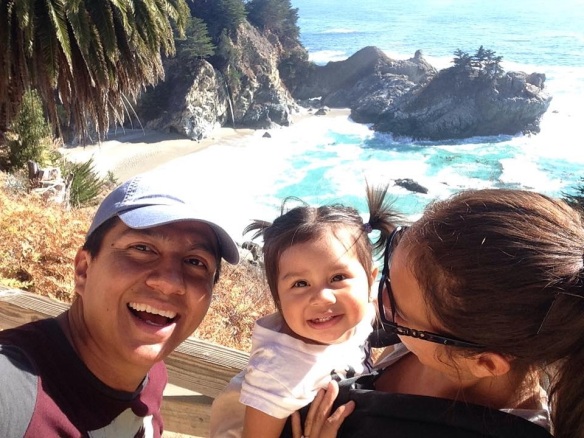 Two weekends ago we got a little crazy and decided to take a quick road trip up to Monterey, California. I was invited to attend the 10th annual Fiesta del Mar by the Monterey Bay Aquariuam to celebrate ocean conservation in the Latino community. I go there every year, but this time we decided to drive up from San Diego and drive on highway 1. It was Carlos and Alessandra’s first time on that highway so I was really excited to share this experience with them: California’s unique and gorgeous coast!
Two weekends ago we got a little crazy and decided to take a quick road trip up to Monterey, California. I was invited to attend the 10th annual Fiesta del Mar by the Monterey Bay Aquariuam to celebrate ocean conservation in the Latino community. I go there every year, but this time we decided to drive up from San Diego and drive on highway 1. It was Carlos and Alessandra’s first time on that highway so I was really excited to share this experience with them: California’s unique and gorgeous coast!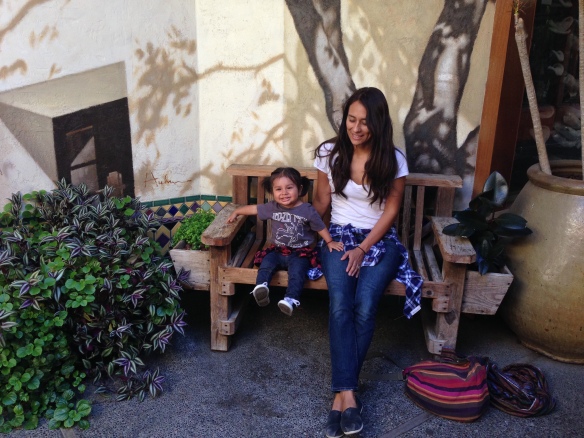
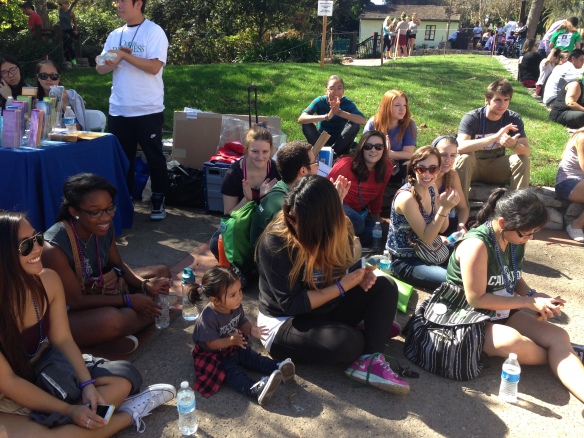 We then hit the road again to start our drive up the 1. We made sure we had some snacks, books, some Peppa pig cartoons on the iPad (thanks dad for letting us borrow it!) and kind of just let her play, walk and run all over downtown San Luis Obispo so by the time she go to the car, she was ready for her nap.
We then hit the road again to start our drive up the 1. We made sure we had some snacks, books, some Peppa pig cartoons on the iPad (thanks dad for letting us borrow it!) and kind of just let her play, walk and run all over downtown San Luis Obispo so by the time she go to the car, she was ready for her nap.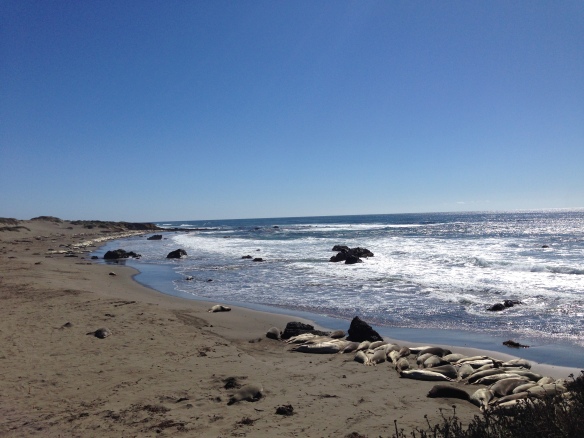
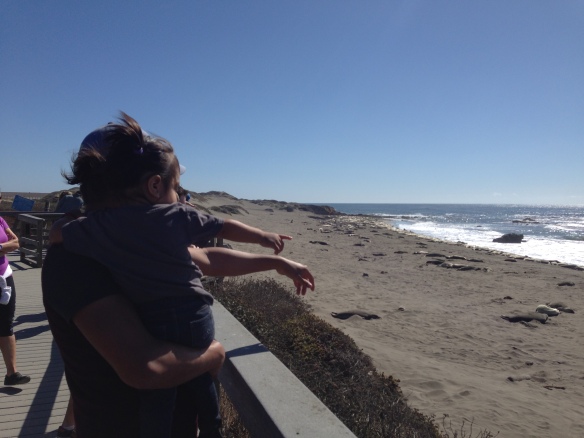 We continued driving until we got to our a place that has been on our travel wish list for a while: Julia Pfeiffer Burns State Park. I did not disappoint! That place is absolutely beautiful, great place for hiking, camping and just a gorgeous view. We are definitely going back to do a camping trip.
We continued driving until we got to our a place that has been on our travel wish list for a while: Julia Pfeiffer Burns State Park. I did not disappoint! That place is absolutely beautiful, great place for hiking, camping and just a gorgeous view. We are definitely going back to do a camping trip.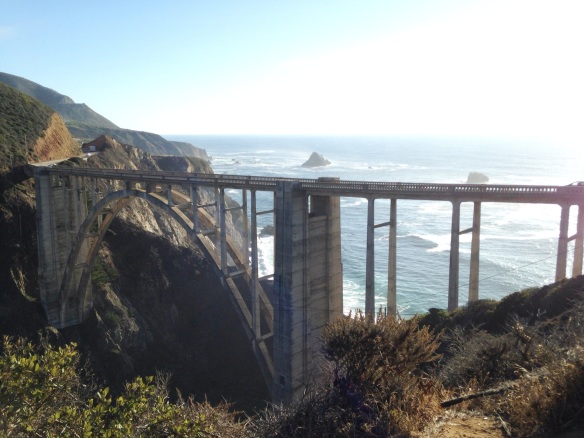 We finally made it to Monterey Bay that same afternoon. The next morning we went to the aquarium and we got to go in about an hour before they opened. Last year we took her, but she was barely 8 months old and didn’t really enjoyed it a lot, this year, oh this year was another story, this year she went crazy!!
We finally made it to Monterey Bay that same afternoon. The next morning we went to the aquarium and we got to go in about an hour before they opened. Last year we took her, but she was barely 8 months old and didn’t really enjoyed it a lot, this year, oh this year was another story, this year she went crazy!!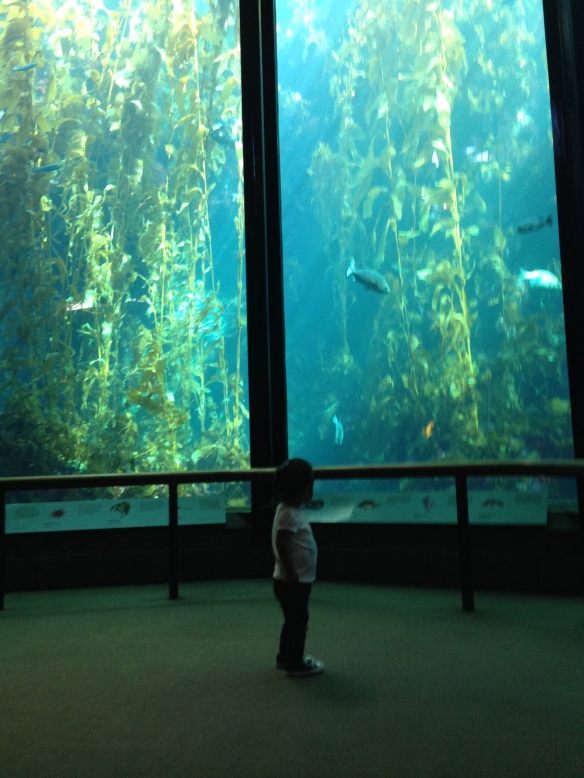
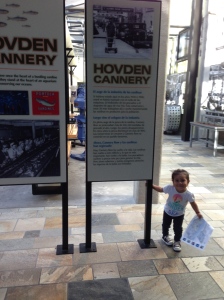
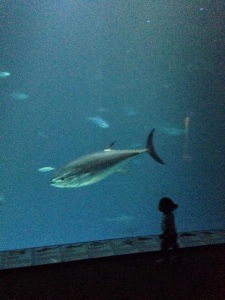
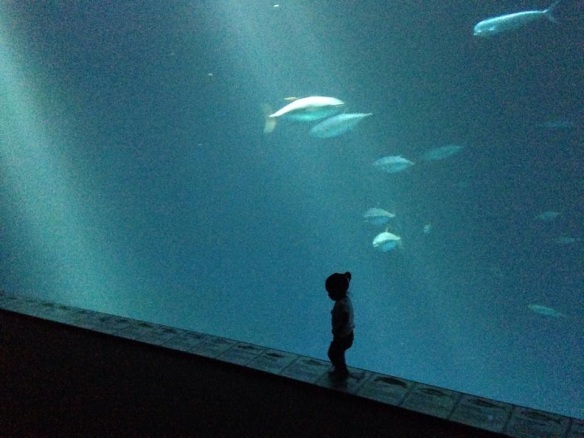 To end our Sunday, we went to Point Lobos State Park and Marine Protected Area to catch the sunset. It was seriously one of the most beautiful sunsets I have ever seen. Well done California!
To end our Sunday, we went to Point Lobos State Park and Marine Protected Area to catch the sunset. It was seriously one of the most beautiful sunsets I have ever seen. Well done California!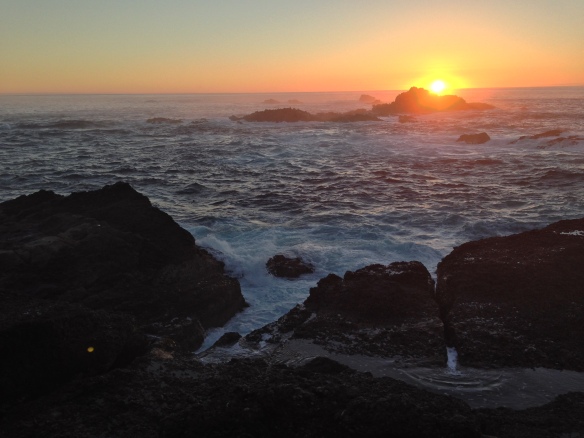
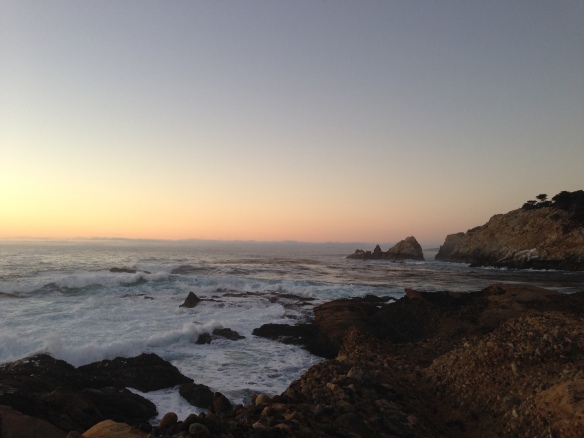
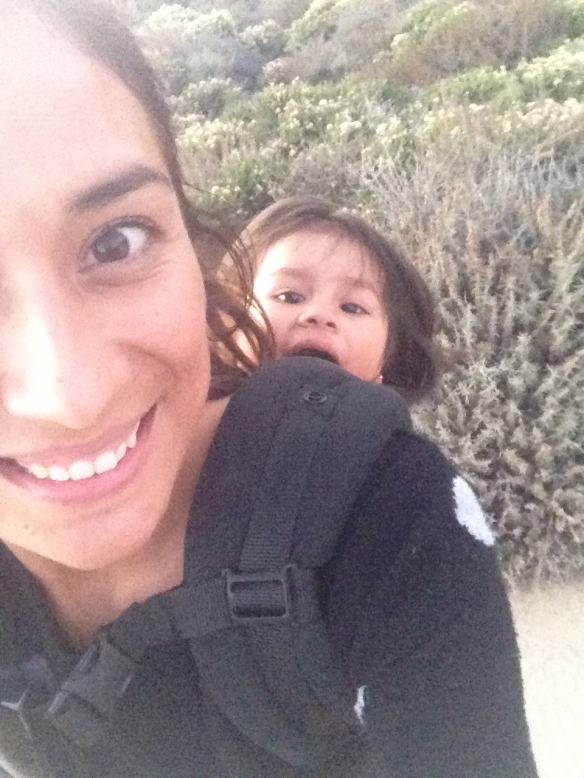 The next day, we slept in to about 9 am, and we drove all the way down to San Diego. We did a few stops along the way to eat breakfast and lunch and took Alessandra to a park so she could stretch her legs and run wild for about an hour. The best you can do during road trips with kids is just do as many stop as you can and take your time, a happy baby in the car makes for a happy ride!
The next day, we slept in to about 9 am, and we drove all the way down to San Diego. We did a few stops along the way to eat breakfast and lunch and took Alessandra to a park so she could stretch her legs and run wild for about an hour. The best you can do during road trips with kids is just do as many stop as you can and take your time, a happy baby in the car makes for a happy ride!
